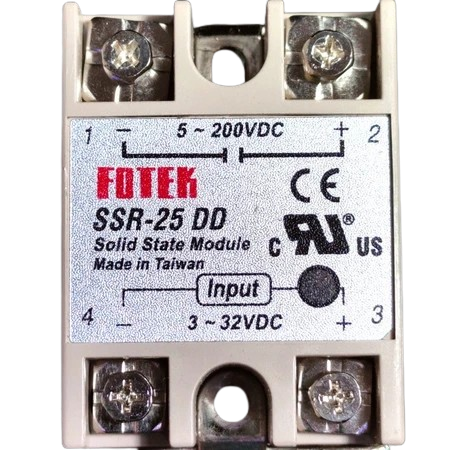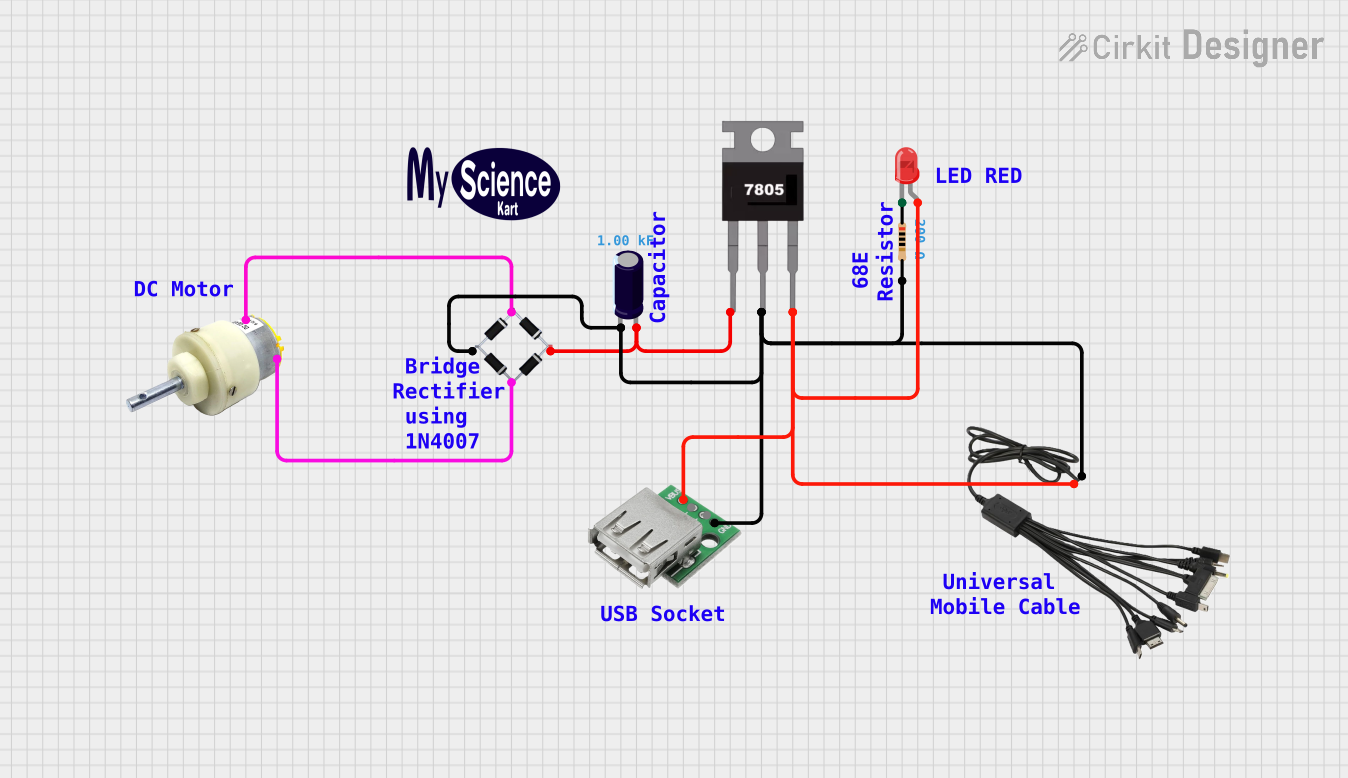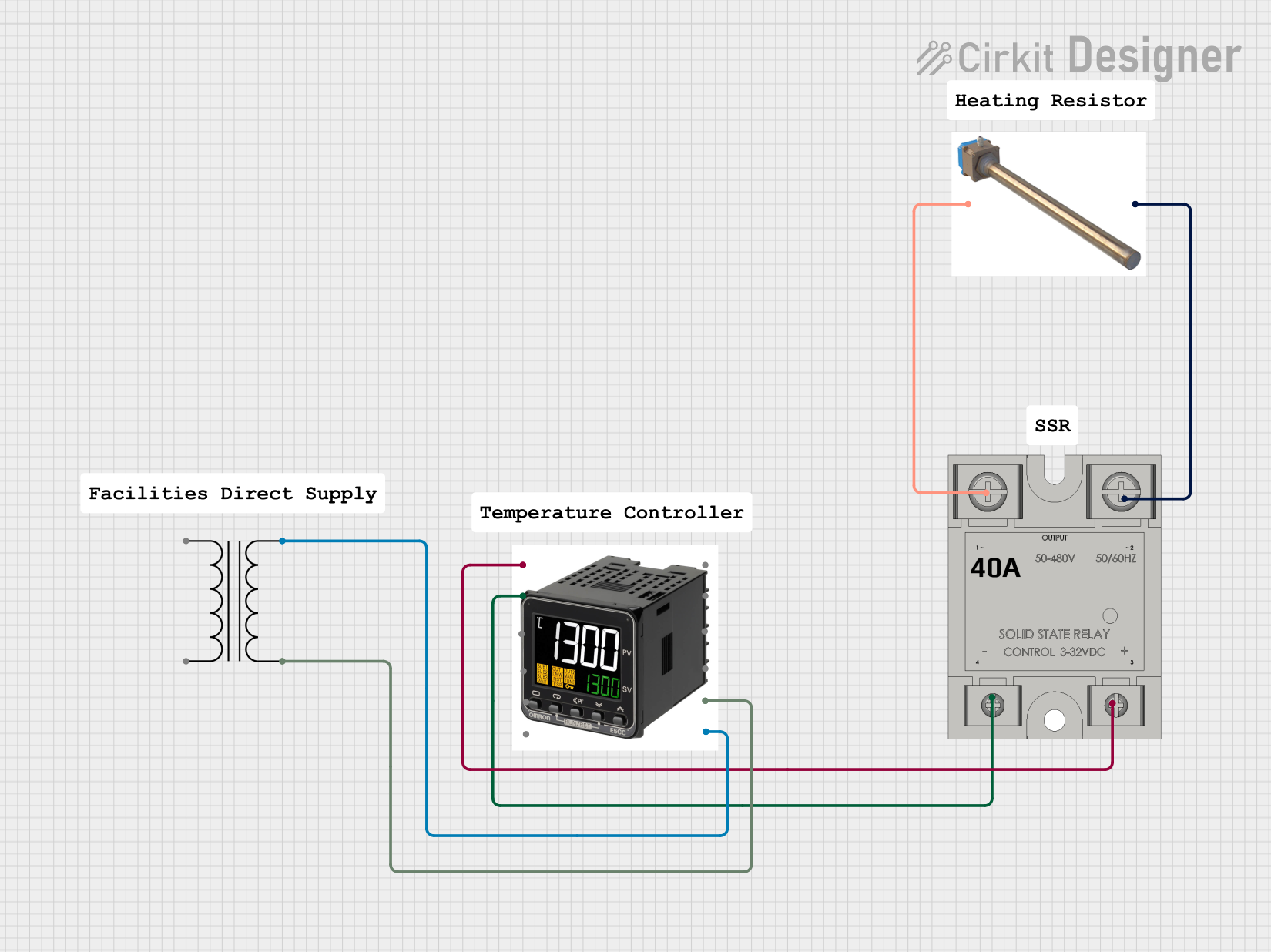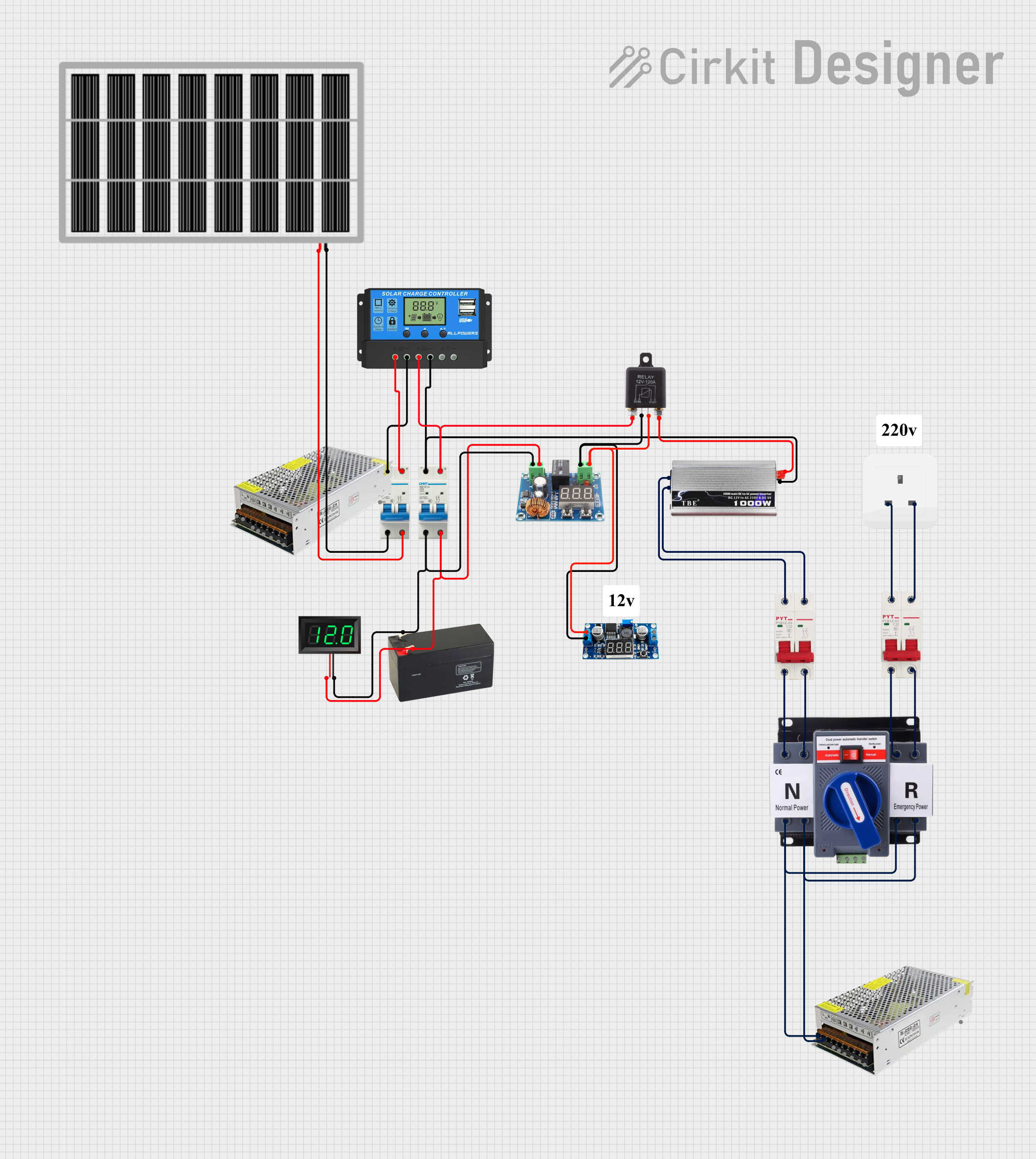
How to Use SSR DC - DC: Examples, Pinouts, and Specs

 Design with SSR DC - DC in Cirkit Designer
Design with SSR DC - DC in Cirkit DesignerIntroduction
The Fotek SSR DC-DC is a Solid State Relay (SSR) designed specifically for DC applications. It enables the control of high-voltage DC loads using low-voltage control signals. Unlike traditional mechanical relays, the SSR DC-DC offers fast switching, high reliability, and no mechanical wear, making it ideal for applications requiring frequent switching or long operational lifespans.
Explore Projects Built with SSR DC - DC

 Open Project in Cirkit Designer
Open Project in Cirkit Designer
 Open Project in Cirkit Designer
Open Project in Cirkit Designer
 Open Project in Cirkit Designer
Open Project in Cirkit Designer
 Open Project in Cirkit Designer
Open Project in Cirkit DesignerExplore Projects Built with SSR DC - DC

 Open Project in Cirkit Designer
Open Project in Cirkit Designer
 Open Project in Cirkit Designer
Open Project in Cirkit Designer
 Open Project in Cirkit Designer
Open Project in Cirkit Designer
 Open Project in Cirkit Designer
Open Project in Cirkit DesignerCommon Applications and Use Cases
- Industrial automation systems
- Motor control in DC circuits
- Battery management systems
- Solar power systems
- LED lighting control
- Robotics and IoT devices
Technical Specifications
The following table outlines the key technical specifications of the Fotek SSR DC-DC:
| Parameter | Value |
|---|---|
| Manufacturer | Fotek |
| Part ID | Not specified |
| Input Control Voltage | 3-32 V DC |
| Output Voltage Range | 5-220 V DC |
| Maximum Output Current | 40 A |
| Switching Speed | ≤ 10 ms |
| Isolation Voltage | ≥ 2500 V AC |
| Operating Temperature | -30°C to +80°C |
| Mounting Type | Panel-mounted |
| Weight | ~120 g |
Pin Configuration and Descriptions
The SSR DC-DC typically has four terminals, as described in the table below:
| Pin Number | Label | Description |
|---|---|---|
| 1 | + (Input) | Positive terminal for the control signal (3-32 V DC). |
| 2 | - (Input) | Negative terminal for the control signal (ground). |
| 3 | + (Load) | Positive terminal for the DC load. Connects to the positive side of the load. |
| 4 | - (Load) | Negative terminal for the DC load. Connects to the negative side of the load. |
Usage Instructions
How to Use the SSR DC-DC in a Circuit
Control Signal Connection:
- Connect the positive control signal (3-32 V DC) to the
+ (Input)terminal. - Connect the ground of the control signal to the
- (Input)terminal.
- Connect the positive control signal (3-32 V DC) to the
Load Connection:
- Connect the positive side of the DC load to the
+ (Load)terminal. - Connect the negative side of the DC load to the
- (Load)terminal.
- Connect the positive side of the DC load to the
Power Supply:
- Ensure the load voltage and current do not exceed the SSR's rated output voltage (5-220 V DC) and current (40 A).
Mounting:
- Secure the SSR to a heat sink or panel to ensure proper heat dissipation during operation.
Testing:
- Apply the control signal to the input terminals. The SSR should switch the load on or off depending on the presence of the control signal.
Important Considerations and Best Practices
- Heat Dissipation: Use a heat sink or cooling fan if the SSR operates near its maximum current rating to prevent overheating.
- Isolation: Ensure proper electrical isolation between the control and load circuits to avoid damage.
- Polarity: Observe correct polarity for both the control and load connections to prevent malfunction or damage.
- Surge Protection: Use a flyback diode across inductive loads (e.g., motors) to protect the SSR from voltage spikes.
- Testing: Avoid testing the SSR with a multimeter in continuity mode, as it may not provide accurate results for solid-state devices.
Example: Connecting the SSR DC-DC to an Arduino UNO
The SSR DC-DC can be controlled using an Arduino UNO. Below is an example circuit and code:
Circuit Description
- Connect the Arduino's digital output pin (e.g., pin 9) to the
+ (Input)terminal of the SSR. - Connect the Arduino's ground (GND) to the
- (Input)terminal of the SSR. - Connect the DC load to the
+ (Load)and- (Load)terminals of the SSR.
Arduino Code
// Example code to control a Fotek SSR DC-DC with an Arduino UNO
// This code toggles the SSR on and off every 1 second.
#define SSR_PIN 9 // Define the Arduino pin connected to the SSR input
void setup() {
pinMode(SSR_PIN, OUTPUT); // Set the SSR pin as an output
}
void loop() {
digitalWrite(SSR_PIN, HIGH); // Turn the SSR on (control signal HIGH)
delay(1000); // Wait for 1 second
digitalWrite(SSR_PIN, LOW); // Turn the SSR off (control signal LOW)
delay(1000); // Wait for 1 second
}
Troubleshooting and FAQs
Common Issues and Solutions
| Issue | Possible Cause | Solution |
|---|---|---|
| SSR does not switch the load on or off. | Incorrect control signal voltage. | Ensure the control signal is within the 3-32 V DC range. |
| Incorrect polarity of control connections. | Verify the polarity of the control signal connections. | |
| Load exceeds SSR's rated current or voltage. | Check the load specifications and ensure they are within the SSR's ratings. | |
| SSR overheats during operation. | Insufficient heat dissipation. | Attach a heat sink or cooling fan to the SSR. |
| Load current is too high. | Reduce the load current or use an SSR with a higher current rating. | |
| Load does not turn off completely. | Leakage current in the SSR. | Ensure the load can tolerate the small leakage current of the SSR. |
FAQs
Can the SSR DC-DC be used with AC loads?
- No, this SSR is designed specifically for DC loads. For AC loads, use an AC-AC or DC-AC SSR.
What is the maximum switching frequency of the SSR?
- The SSR can switch at speeds up to 10 ms, making it suitable for most DC applications.
Do I need an external resistor for the control signal?
- No, the SSR has an internal resistor to limit the control current. Ensure the control voltage is within the specified range.
Can I use the SSR with an inductive load like a motor?
- Yes, but you must use a flyback diode across the load to protect the SSR from voltage spikes.
By following this documentation, you can effectively integrate the Fotek SSR DC-DC into your projects and ensure reliable operation.